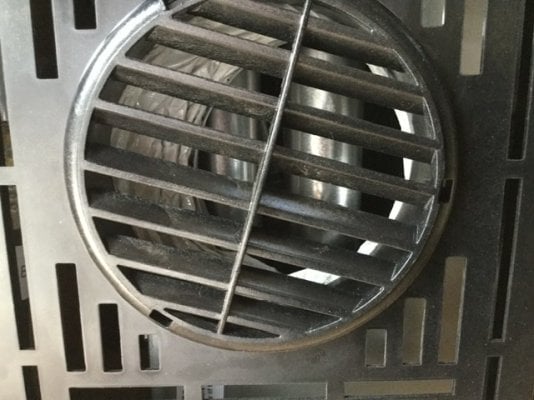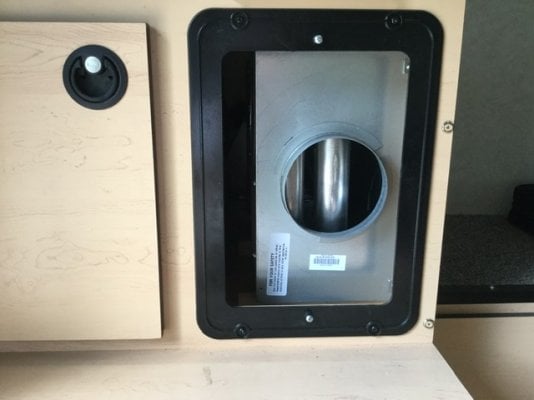Thought I'd post a pic because, well, we all like pics right? 

So, first night out. Not nearly as cold as I anticipate camping in, temps got down to the low 30s. High 30s until the wee hours. About 10 pm I get in and turn on the heater and it fires up and performs as it should. In no time my camper is over 60 degrees and I'm excited. I've never camped with heat before. Maybe I'm getting soft, but this felt good! I went to sleep with the heater cycling on and off, all is well.
Woke up about 3 AM to a very cold camper. Obvious heat was no longer on. I turned the thermostat off, and then back on. The fan in the furnace started turning strong. For less than a minute and shut off never igniting. I repeated a couple of times with same result. Voltmeter was reading 12.7 and I figured it wasn't power because the fan was at what sounded like full speed. Correct me if I'm wrong but I assume the fan is the biggest draw on the furnace. So I figured it wasn't a low battery. I check propane and tank felt heavy so now problem there. I started wondering if I need to troubleshoot something inside the furnace, but not in the middle of the night.
Here's where it gets odd. Just to be sure I go ahead and fire up my truck. Voltmeter reads 14+ V with truck charging. I turn thermostat off then on again and furnace fires right up. Runs like a champ. Warm camper turn off truck and furnace cycles again as I go back to sleep. Wake up before 6 AM (which is when I was getting up anyway) to same cold camper no heat, voltmeter around 12.6V, starting truck makes everything ok
So what gives? Is it possible that my battery was discharged further than the voltmeter would indicate?
I also tried to reproduce this scenario at home by running heater at max with doors/vents open. Ran about 4 hours straight, voltmeter down to 12.3 and fired right up again, no problem. Wondering if this is common or any ideas? I'd like to head up to the hills here and snow camp, but would rather not troubleshoot in the middle of the night

So, first night out. Not nearly as cold as I anticipate camping in, temps got down to the low 30s. High 30s until the wee hours. About 10 pm I get in and turn on the heater and it fires up and performs as it should. In no time my camper is over 60 degrees and I'm excited. I've never camped with heat before. Maybe I'm getting soft, but this felt good! I went to sleep with the heater cycling on and off, all is well.
Woke up about 3 AM to a very cold camper. Obvious heat was no longer on. I turned the thermostat off, and then back on. The fan in the furnace started turning strong. For less than a minute and shut off never igniting. I repeated a couple of times with same result. Voltmeter was reading 12.7 and I figured it wasn't power because the fan was at what sounded like full speed. Correct me if I'm wrong but I assume the fan is the biggest draw on the furnace. So I figured it wasn't a low battery. I check propane and tank felt heavy so now problem there. I started wondering if I need to troubleshoot something inside the furnace, but not in the middle of the night.
Here's where it gets odd. Just to be sure I go ahead and fire up my truck. Voltmeter reads 14+ V with truck charging. I turn thermostat off then on again and furnace fires right up. Runs like a champ. Warm camper turn off truck and furnace cycles again as I go back to sleep. Wake up before 6 AM (which is when I was getting up anyway) to same cold camper no heat, voltmeter around 12.6V, starting truck makes everything ok
So what gives? Is it possible that my battery was discharged further than the voltmeter would indicate?
I also tried to reproduce this scenario at home by running heater at max with doors/vents open. Ran about 4 hours straight, voltmeter down to 12.3 and fired right up again, no problem. Wondering if this is common or any ideas? I'd like to head up to the hills here and snow camp, but would rather not troubleshoot in the middle of the night


